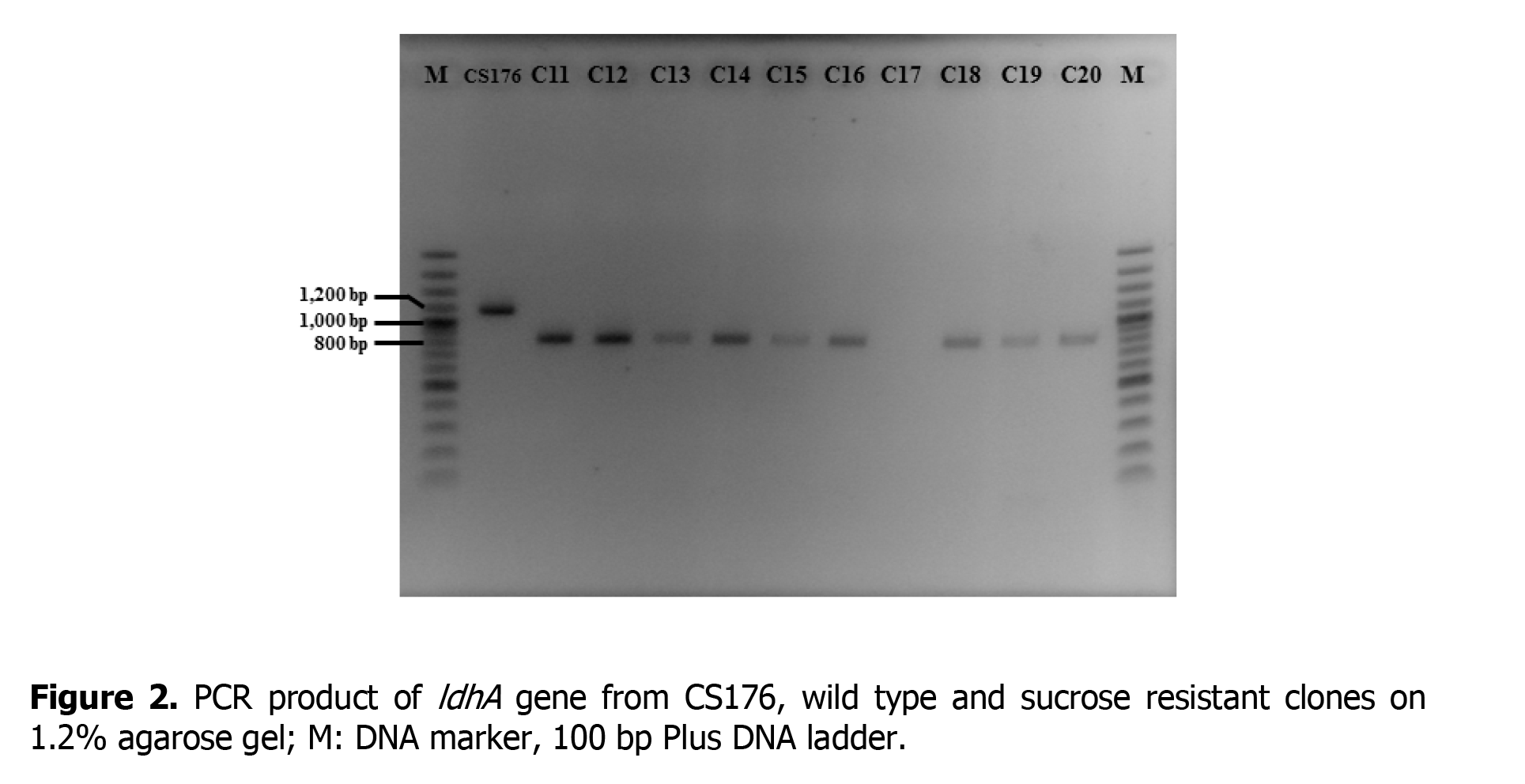Enhanced succinic acid production from L-arabinose by Corynebacterium glutamicum CS176-Δ/dhA disruptant
Keywords:
arabinose-utilizing C. glutamicum, bio-based succinic acid production, gene disruptionAbstract
Corynebacterium glutamicum CS176 (CS176) was previously isolated from chicken feces contaminated soil from Suwanvajokkasikit Farm at Kasetsart University. The CS176 strain is among few native strains of industrial bacteria which can utilize L-arabinose, a pentose sugar as fermentative substrate. Recently, many attempts have been made to engineer C. glutamicum for efficient succinic acid production. In this research, we aimed to improve succinic acid production of CS176 strain. To do this, the gene encoded lactate dehydrogenase enzyme (ldhA ) of CS176 was disrupted by construction of plasmid pK19mobsacB -ΔldhA harboring deleted ldhA and cloning to CS176. Subsequently, the disruptant, CS176-ΔldhA -C12 (C12) was obtained and its succinic acid production was investigated. The production was carried out by two-stage fermentation in 16x125 mm screw-cap tube containing 15 ml basal salt (BT) medium without nitrogen source. The results indicated the succinic acid concentration in BT-arabinose of C12 disruptant reached 1.74 g/l with a productivity yield of 0.89 g g dried cell within 2 h after 10.7 mM sodium bicarbonate was added. C12 disruptant enhanced succinic acid in arabinose with 1.62-fold as compared with the wild type. In addition, the succinic acid concentration in BT-mixed glucose and arabinose reached 1.31 g/l with a productivity yield of 0.63 g/g dried cell which was 2.52-fold higher than that of wild type. Thus, this study suggested that disruption of ldhA gene of CS176 strain can improve succinic acid production especially in arabinose. The C12 disruptant would be suitable for starting as succinic acid producer and further works required for successful fermentative production especially from pentose sugar derived from lignocellulosic biomass.


